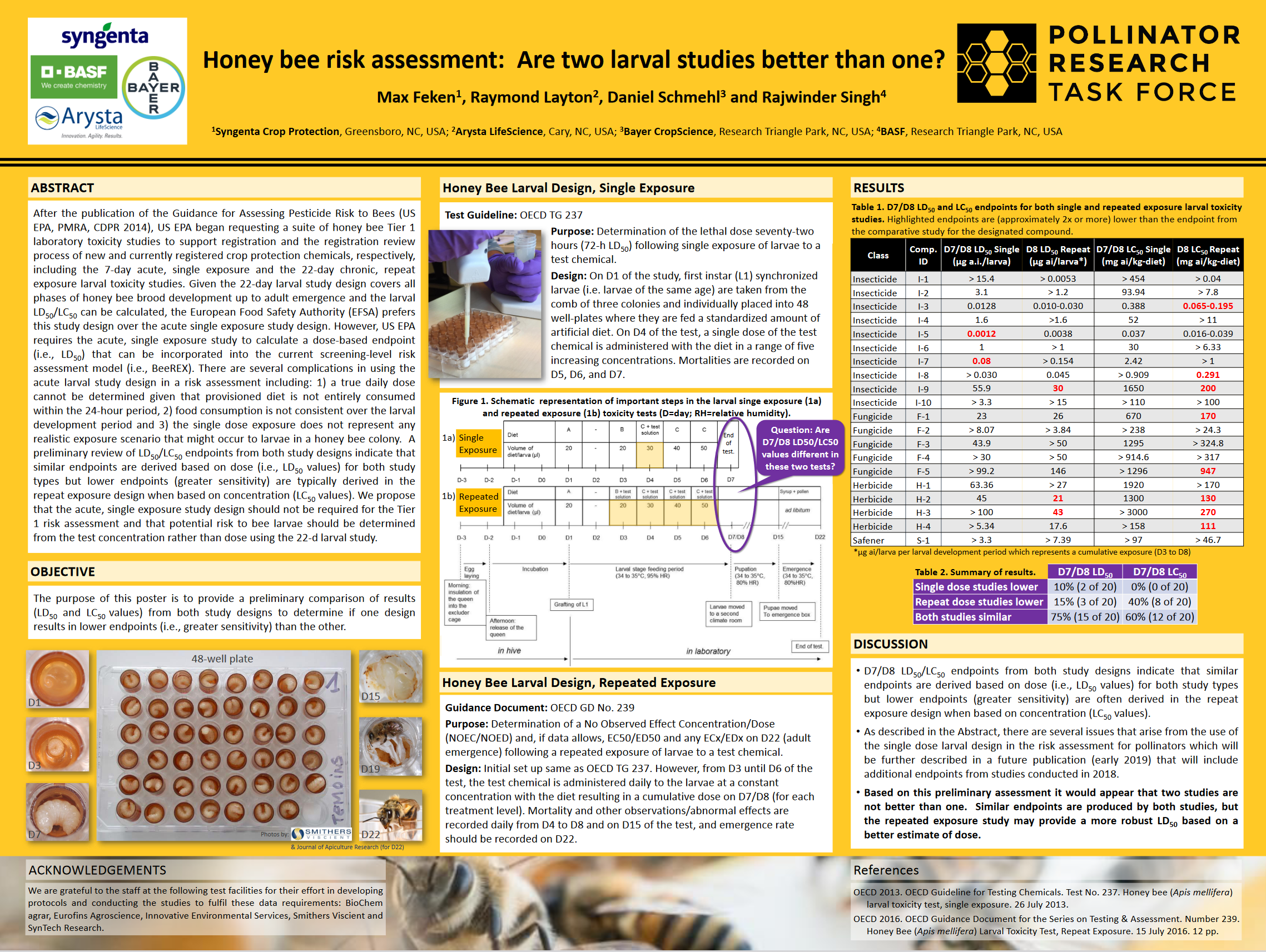Comparison of knowledge contributed to the risk assessment by two different honey bee larval test designs: 7-day acute, single dose vs. 22-day chronic, repeated dose
Honey bee larvae may be potentially exposed to pesticides as they are fed worker jelly containing processed nectar and pollen during development. Two different testing protocols have been developed to study potential toxicity of this important life stage:
- The single exposure or acute test (OECD Guideline 237) measures mortality at day 7-8 of larval development (pre-pupal phase) after a single exposure on day 4 of development.
- The “repeated dose” test in which the larvae are exposed on days 3 through 6 of development (OECD Guidance Document 239) and then measures mortality at day 7-8 of larval development, mortality during pupation, and then emergence rate at approximately day 22 when adults typically complete pupation.
The USEPA requires both the single dose “acute” larval test as well as the repeated dose “chronic” test. Other regulators only require the 22-day, chronic test as it covers all life stages of brood development. This shift occurred as the 22-day protocol was improved and control results were more robust. The repeated dose study design provides a better understanding of potential exposure since the diet is totally consumed by the larvae, rather than being diluted by subsequent non-treated diet additions as is done in the single dose design. The repeated dose test provides a longer, potentially more complete picture of risk to honeybee larvae development.
PRTF has begun an evaluation to compare if the results obtained on day 7-8 in the repeated dose study are comparable to the results from the single dose acute tests. If the results are comparable, then the single dose test could be considered redundant in terms of informing the risk assessment.
Preliminary data was presented at the Society of Environmental Toxicology Meeting (Nov 2018) indicating that the two tests provide comparable data. This effort will be expanded to include more products and the results will be published.

